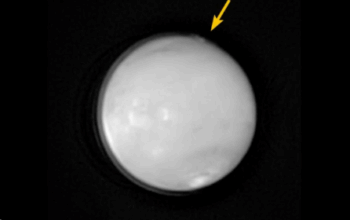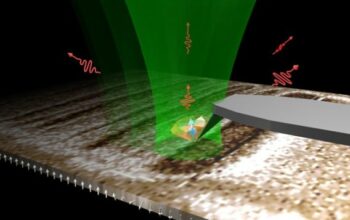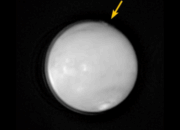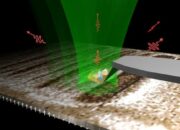Holography, a technique that enables the recording and reproduction of three-dimensional images, has transformed the field of imaging and data storage. While various light sources can theoretically be employed for this purpose, lasers have emerged as the predominant choice for holographic applications. This discourse elucidates the underlying reasons why lasers are particularly suited for holography, addressing fundamental principles and the intrinsic characteristics of laser light that render it indispensable to this advanced technology.
To comprehend the superiority of lasers in holography, one must first appreciate the fundamental nature of holography itself. Holography relies on the interference and diffraction of light to record light fields. A hologram captures both the amplitude and phase of light waves, requiring a coherent light source to facilitate the precise interference patterns necessary for creating a three-dimensional image. Coherence, in this context, refers to a fixed phase relationship between light waves over a specified distance. Lasers are uniquely capable of producing coherent light, distinguishing them from ordinary light sources.
The coherence of laser light can be categorized into two types: temporal and spatial coherence. Temporal coherence pertains to the correlation of the light wave’s phase at different time intervals, while spatial coherence relates to the uniformity of phase across the wavefront at a given instance. Lasers typically exhibit high temporal coherence, resulting in a monochromatic beam with a well-defined wavelength, which allows for sustained interference patterns. Spatial coherence, although variable among laser types, is generally more pronounced than in non-coherent light sources such as incandescent bulbs or fluorescent lights.
A quintessential characteristic of laser light is its monochromatic nature. The monochromaticity of a laser—a property that allows it to emit light of a single wavelength—ensures that the interference pattern used in holography remains stable over time. This stability is crucial for the reproduction of high-fidelity holograms. Conversely, non-monochromatic light sources, which emanate multiple wavelengths, result in a spectrum of interference patterns that complicate the recording process and degrade the quality of the resultant holograms.
Furthermore, the beam divergence of lasers plays a critical role in holography. Laser beams are typically collimated, meaning they maintain a narrow, focused profile over significant distances. This attribute permits accurate and detailed recording of holographic images without significant loss of resolution. In contrast, the divergent nature of non-collimated light sources leads to spreading of the beam, resulting in a diminutive quality of the holographic image. The collimation of laser light not only facilitates high-resolution imaging but also enables holographic recording over considerable distances, which is vital for various applications, ranging from data storage to artistic endeavors.
Another integral factor contributing to the preeminence of lasers in holography is their intensity control. Many lasers can be modulated with exceptional precision, allowing for variation in light intensity without compromising coherence. This feature is particularly beneficial during the recording phase of holography, where controlled interference patterns are imperative to ensure that the captured image remains sharp and defined. Non-laser sources often lack this degree of intensity precision, leading to chaotic interference patterns and suboptimal holographic recordings.
The role of lasers extends beyond mere image recording; they are also pivotal in the reconstruction of holograms. When light is shone onto a hologram, it interacts with the recorded interference pattern, generating a three-dimensional image. The coherent light from a laser allows for the recreation of the original light field with remarkable accuracy. This regeneration is crucial for applications wherein the quality and fidelity of the holographic image are imperative, such as in medical imaging and security holograms.
Moreover, advances in laser technology have facilitated the evolution of holography itself. Modern lasers, such as fiber lasers and semiconductor lasers, provide improved efficiency and lower costs, thereby democratizing access to holographic techniques across various industries. The continued development of lasers has motivated innovative holographic methodologies, contributing to advancements in fields like optical data storage, telecommunications, and augmented reality.
It is also important to consider the syntheses of laser technologies with other optical components, which further amplify the efficacy of lasers in holography. The integration of spatial light modulators and optical fibers with lasers permits the manipulation of holograms in real-time, bringing forth new possibilities for interactive holographic displays. This interplay between lasers and advanced optics underscores the versatility and adaptability of holographic applications.
In summary, the unparalleled suitability of lasers for holography stems from their coherent nature, monochromatic emission, beam collimation, and precise intensity modulation. These intrinsic features of lasers not only facilitate high-resolution image creation but also enable the accurate and reliable reproduction of complex holographic images. As technology continues to advance, the role of lasers in holography will undoubtedly broaden, catalyzing further innovations across diverse domains of science and technology. The harmonious marriage of lasers and holography symbolizes a profound exploration of light and its potential, illuminating the path toward more immersive and interactive visual experiences.










